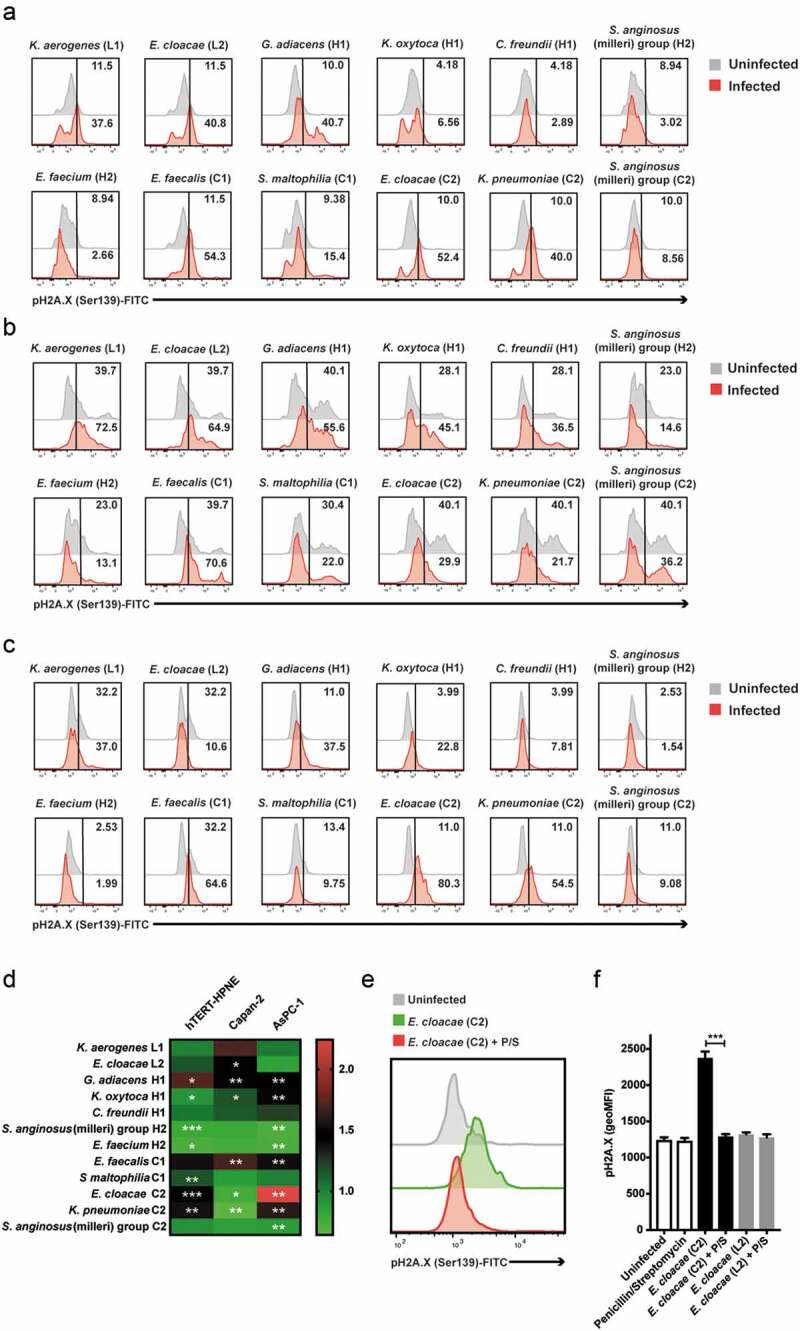Figure 1.

DNA damage induced by infection with bacterial isolates in healthy (hTERT-HPNE), early (Capan-2) and late differentiation stage cancer (AsPC-1) pancreatic cell lines. (a-c) Representative stain of histone H2A.X phosphorylation in response to the isolate panel in hTERT-HPNE (a), Capan-2 (b) and AsPC-1 (c) cell lines. Numbers denote percentage positive events. (d) Histone H2A.X phosphorylation in response to the isolate panel in hTERT-HPNE, Capan-2 and AsPC-1 cell lines (n = 3). (e) Representative stain of histone H2A.X phosphorylation in response to E. cloacae (C2) with or without penicillin/streptomycin presence in the AsPC-1 cell line. (f) Inhibition of histone H2A.X phosphorylation in response to E. cloacae (C2/L2) in the presence of penicillin/streptomycin in the AsPC-1 cell line (n = 3). Statistical significance was determined using unpaired t-test with Welch’s correction. Statistical data for pH2A.X relative change (D) was computed on raw geometric MFI values (*p < .05, **p < .01, ***p < .001)
